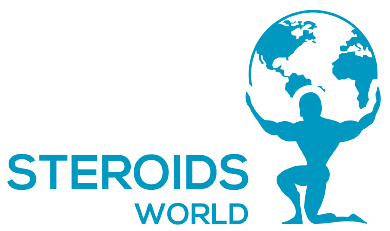The material that follows provides insight into the concepts of elements that promote and impede muscle growth as well as external assistance like drugs and injectables. All suggested techniques and additional facets of muscle growth.
Muscles:
Muscles are the fibrous band or bundles of fibrous tissues linked to the bones and oversee causing movements, such as those made by the calf muscles, or carrying out specific tasks, such as the heart muscles’ pumping of blood. They serve largely as the body’s source of energy as well. The classification of the many kinds of muscles is as follows:
- Consists of the general external skeleton and a set of muscles responsible for movement.
- Accountable for the heart organ’s proper operation.
- Present in the visceral lining and vascular lumen, such as in the walls of the venules or arterioles.
Purpose of building muscles:
There are various reasons to gain muscle, however, the following are some of the more prevalent ones:
- Bodybuilders
- Athletes
- After suffering serious burn damage
- Those who wish to tone their bodies
Muscle growth:
Muscle building is the process by which muscles are made stronger or by which their bulk is increased through muscular hypertrophy. Typical techniques include the following:
- Exercise and diet change
- supplements shake with protein
- Drugs
In the following subheadings, each technique will be covered in full.
Strength workouts:
The most popular and traditional approach to increasing muscle mass is strength training, which consists of anaerobic workouts and fitness training in the gym. A fitness professional is recommended to assist you in gaining muscle mass. Mechanical strain, metabolic stress, and muscular injury are three fundamental concepts that support muscle growth. Both targeted training to develop a particular kind and location of muscle and generalised training to increase total body tone are available. Also referred to as resistance training, this sort of exercise involves lifting weights to build muscular strength and endurance. Other training methods, such as isometric and polymetric exercises, are also available to assure growth in muscle mass. The following training drills are the most advised:
predominant knee (luges and squats)
strong hip (deadlifts and hinges)
pulling actions (pull-ups)
Pushing actions (dips and push-ups)
Cardio (running and brisk walking)
Modifications to diet:
A diet high in protein and low in carbs, paired with excellent fats, is needed to ensure muscle growth. Other dietary adjustments are also necessary to assure and speed up the process of muscle building. To provide a sufficient supply of protein, it is largely necessary to increase the consumption of fish, eggs, and meat. a decent breakfast. The preference should be for nutritious meals, lots of water, and regular sleep patterns.
Additional aid:
As science has advanced, there are now several more methods in addition to natural methods for accelerating the process of muscle growth. These methods include supplements to increase body endurance so that more time can be spent in the gym and more advantages may be realised. There are several dietary supplements, protein shakes, and energy drinks available on the market to help in muscle growth.
Medicines recommended:
There are a variety of drugs available to help with muscle building, most of which are anabolic steroids, while others act similarly to anabolic steroids in that they strengthen muscles. However, because of the harmful effects that anabolic steroids have on the body, as well as their post-complication and life-threatening effects, most anabolic steroids are illegal and can only be obtained through online vendors who sell them illegally. However, these should be avoided, and instead, only authorised medications should be used as directed and only after consulting a qualified professional. Following is some of the most popular medications used for muscle building:
- Anavar
- Dianabol
- Testosterone
- Clenbuterol
There are still a lot of additional possibilities available, but we’ll focus on these four for now:
Anavar:
Oxandrolone, also known as Anavar, is an androgenic anabolic steroid. Constructing protein building blocks aids in weight gain and strengthens bones. To increase muscle growth, it works by keeping nitrogen in the body, primarily at muscle sites. Anavar is especially purchased by women for bulking cycles.
Dianabol:
Methandienone is sold under the trade name Dianabol. It falls under the umbrella of an anabolic androgenic steroid. For its affordability, Dianabol is frequently purchased by people. It was the first steroid to be made available for purchase. It works by boosting the synthesis of testosterone; as a result, there is an increase in endurance, muscle strength, and muscle mass. However, because Dianabol steroids have now been outlawed because of their harmful effects on the heart, kidneys, and liver, D-bal is available as a legal substitute.
Testosterone:
The main sex hormone in men, testosterone is important for both primary and secondary sexual development, including the growth of testes, muscular mass, and body hair. Exogenous testosterone is taken in tablet form and is frequently used to increase muscle growth and strength to build muscle. The usage of testosterone steroids should be cautious since they may affect the body’s hormonal balance.
Clenbuterol:
The sympathomimetic amine clenbuterol is utilised as a bronchodilator. But it also possesses certain androgenic qualities that aid in skeletal muscle mass expansion and muscle growth. Additionally, they increase basal metabolic rate, which aids in calorie or fat loss. People purchase clen over the counter to aid with muscle building, but specialists do not recommend it.
Conclusion:
There are many techniques to grow muscle, but one should choose a better, organic approach. Strength training, a healthy diet, and legal steroids are three fantastic strategies to increase muscle build. Supplemental and pharmaceutical help should be taken into consideration, but only after consulting with experts and carefully, as prolonged use has significant health hazards.

















